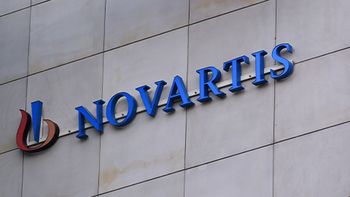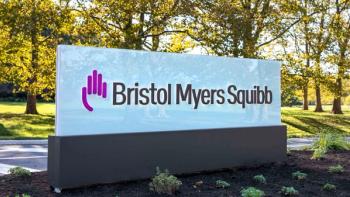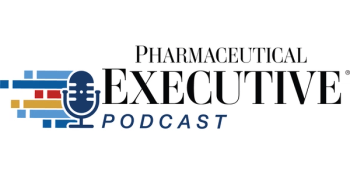Bridging the Gap Between Innovation and Access: Q&A with Matt Riordan
Key Takeaways
- Rapid innovation in oncology necessitates ensuring new therapies reach community oncologists, where most patients are treated.
- Addressing community oncology barriers involves enhancing medical affairs, simplifying diagnostics, and supporting insurance approvals.
Putnam’s CEO discusses advancements in oncology and how companies are working to ensure patients have access to these new treatments.
Market access is one of the key issues for the pharmaceutical industry. It’s important to innovate, but it’s significantly more important to make sure that those innovations make it to patients. Putnam’s CEO Matt Riordan spoke with Pharmaceutical Executive about how this is playing out in the oncology space.
Pharmaceutical Executive: How can the industry bridge the gap between innovation and access in community oncology?
Matt Riordan: Innovation is moving at an incredible pace in oncology. There are several new technology platforms that are emerging in clinical practice, including CAR-Ts, antibody-drug conjugates, bispecifics, and radioligand therapies. And the list keeps growing, including dual PDL1/VEGF inhibitors, trispecific antibodies, and targeted protein degraders. Making sure those advances reach the full spectrum of practicing oncologists, not just those at major academic centers, can be challenging.
Community oncology is where the majority of patients are treated in the United States, and the community setting faces unique barriers when it comes to adopting new modalities. This includes:
- Investing in community-level medical affairs engagement so physicians in non-academic settings are equipped to use cutting-edge therapies with confidence
- Thoughtful design of product ordering, administration, and monitoring that is easily onboarded into the community care environment
- Simplifying diagnostics and embedding biomarker testing into standard workflows to ensure appropriate patients are identified without delay
- Developing tailored hub services that support insurance approvals, accelerated product delivery, and patient access
- Educating patient and their families about the available options in the critical “micro-moments” where there is an opportunity to influence treatment direction
Overall, the way we will be successful in bridging this gap starts with decentralized clinical trials and community research networks that ensure that the latest science reaches beyond major cancer centers, creating equity in access to innovation and providing key insights to pharmaceutical developers on what it takes to make these innovations work in the community setting. Bringing together development, marketing, medical, market access, and regulatory functions to all have a shared vision of success in the community makes an enormous difference. If we can shorten that lag between breakthrough and standard of care, even by a few years, we can change outcomes for thousands of patients.
PE: What are some ways the industry can improve access to complex therapies?
Riordan: Access to complex therapies is never just one problem to solve; it’s a chain of challenges that all have to be addressed in parallel. This includes considerations of proper and prompt insurance access, placement of medical innovations on appropriate protocols and pathways within clinics and physical access to products in a convenient and timely manner. At ASCO this year, you could see how rapidly these new technologies are advancing through clinical trials, but also how operational realities such as manufacturing timelines, site capabilities and reimbursement models can slow that progress.
Improving access starts with forward planning. As an industry, we need to be thinking about infrastructure and education well before launch. That means developing rapidly scalable solutions that ensure that treatment sites, especially in the community, having the right training and protocols in place to handle the therapy safely and effectively. It also means aligning payer engagement and evidence generation early, so the reimbursement conversation is ready at the point of FDA approval.
One of the key learnings from launches we’ve supported is that you need to remove as much friction as possible from referral pathways. That might mean creating digital platforms that guide clinicians and patients through eligibility, scheduling and follow-up, or equipping community providers with clear, accessible decision tools.
Finally, the message has to be consistent across the organization. Commercial teams, medical affairs, market access, and regulatory all have to be working from the same blueprint, so that what’s promised in the clinic is supported by what’s delivered in the field. When that alignment is there, you can take what might otherwise be a slow, selective rollout and turn it into something that scales quickly and equitably.
PE: What challenges are emerging in the CAR-T in solid tumors space?
Riordan: CAR-T therapy has reshaped the treatment paradigm for several hematologic malignancies, offering long-term remission for patients with otherwise limited options. However, translating this success into solid tumors has proven far more complex. The scientific, clinical, operational, and economic challenges form a multi-layered barrier that the industry must confront with urgency and creativity.
Significant scientific and biological challenges exist. This starts with the tumor micro-environment, which is not just a hurdle – it’s an active defense system that neutralizes CAR-T activity. Cracking that code is the key to success in solid tumors. The next challenge is antigen heterogeneity in solid tumors; without a universal target like CD19, we must innovate around multi-antigen and personalized approaches. A final biological challenge is cell trafficking and tumor penetration, as CAR-T cells often struggle to traffic efficiently to solid tumors and penetrate dense stromal barriers.
Manufacturing also remains a challenge; autologous CAR-T therapies are costly, time-intensive, and logistically complex, which is particularly problematic when treating patients with rapidly progressing solid tumors. Moreover, safety concerns, including cytokine release syndrome and off-tumor, on-target toxicity, are magnified in solid tumors.
While the path forward is fraught with complexity, the stakes are too high to retreat. Solid tumors represent the vast majority of cancer cases worldwide, and if CAR-T therapies can be successfully translated, they could redefine the standard of care for millions of patients.
PE: How will precision medicine play a role in this area?
Riordan: Precision medicine has been a pillar of oncology treatment for more than two decades. As precision medicine advances in new and exciting ways, it will help us overcome the barriers of both access and efficacy in oncology. By integrating comprehensive genomic profiling into routine care, clinicians can identify patients most likely to benefit from advanced therapies, ensuring resources are deployed where they will have the greatest impact. In CAR-T and other cell therapies, precision medicine enables the development of tailored constructs targeting specific tumor antigens, while predictive biomarkers can help stratify patients for whom risks outweigh benefits. Beyond biology, precision medicine also opens doors to adaptive trial designs, reducing time-to-market for innovative therapies. Importantly, embedding precision approaches in community oncology settings ensures equitable access, allowing patients outside major centers to benefit from cutting-edge science.
For the industry, this has two major implications. First, it improves the clinical value proposition by increasing the likelihood of durable benefit, critical for payer confidence and adoption. Second, it makes the delivery model more sustainable, because resources can be concentrated on the patients who stand to gain the most, easing some of the capacity constraints that come with complex therapies
An exciting frontier in oncology today is how precision diagnostics may change who we treat and who we do not. Biomarker-driven selection and tools like circulating tumor DNA (ctDNA) can refine patient cohorts, improving both efficacy and quality of life. For example, peri-operative durvalumab in muscle-invasive bladder cancer showed benefit across all patients, but the strongest results were in those who were ctDNA-positive, suggesting it’s possible to focus high-intensity treatments where they’re most likely to have an impact. Monitoring the emergence of ESR1 mutational clones in the ctDNA of advanced breast cancer patients has now shown us who can benefit from treatment interventions before disease progression occurs. The holy grail of precision diagnostics remains routine panel-based monitoring of large populations of healthy individuals to identify the first signs of cancer when it is early enough to intervene with curative intent – we’re getting closer and closer to accessing that grail.
The end goal is clear: every patient should have access to a therapy that’s designed for the specifics of their disease biology, delivered at the right time and supported by a system ready to manage it.
Newsletter
Lead with insight with the Pharmaceutical Executive newsletter, featuring strategic analysis, leadership trends, and market intelligence for biopharma decision-makers.





